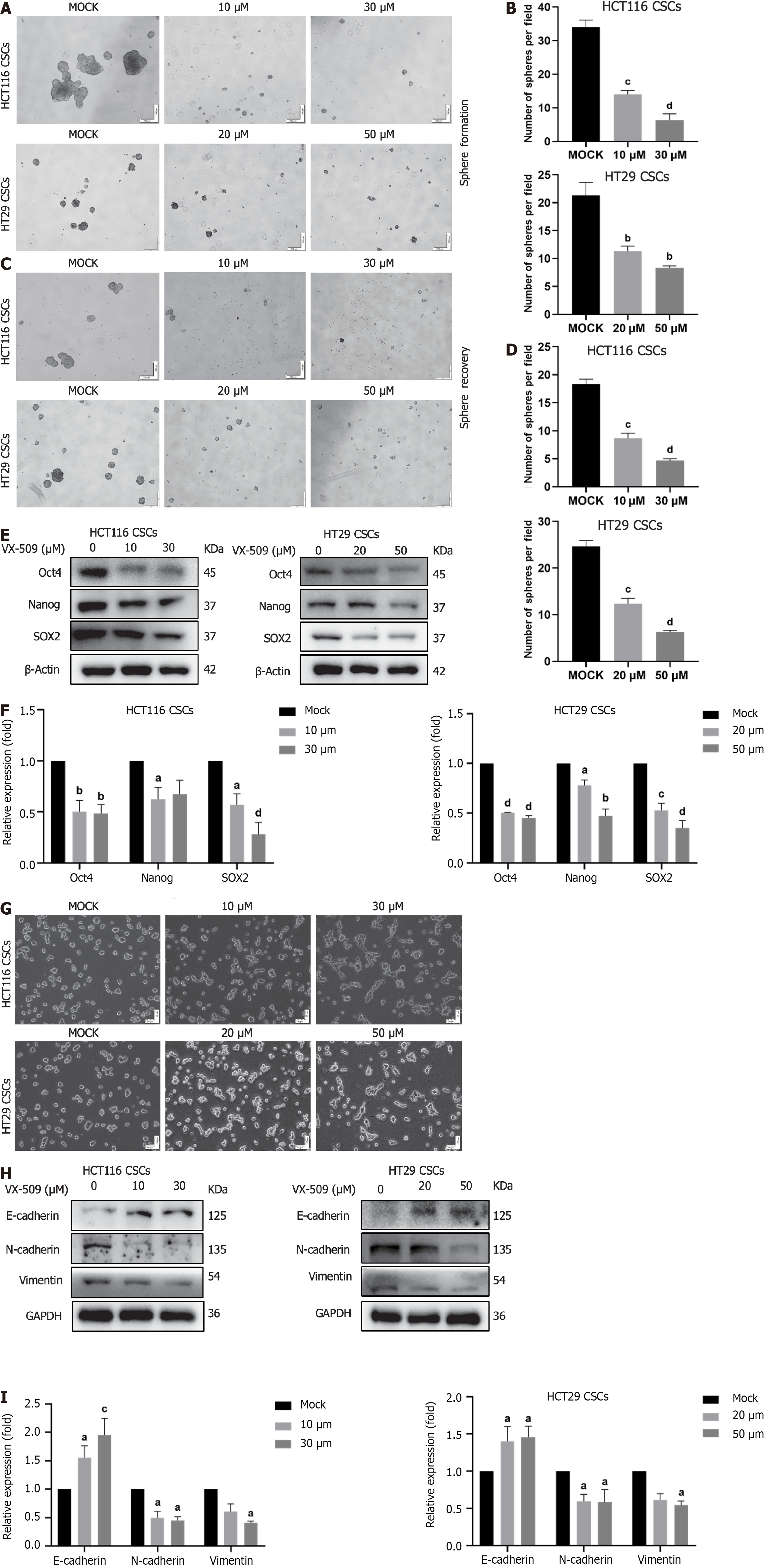Copyright
©The Author(s) 2024.
World J Stem Cells. Feb 26, 2024; 16(2): 207-227
Published online Feb 26, 2024. doi: 10.4252/wjsc.v16.i2.207
Published online Feb 26, 2024. doi: 10.4252/wjsc.v16.i2.207
Figure 3 VX-509 inhibits the cancer stem cells characteristics of colorectal cancer-derived cancer stem cells and has an inverse effect on the epithelial-mesenchymal transition progression.
A-D: Representative morphology after VX-509 treatment (A, sphere formation assay) or pretreatment (C, sphere recovery assay) and relative statistical analysis (B and D); E: Western blot analysis of Oct4, Nanog, and SOX2 in colorectal cancer (CRC)-derived cancer stem cells (CSCs) treated with different concentrations of VX-509; F: Densitometric analysis of Oct4, Nanog, and SOX2, normalized against β-actin; G: Representative morphology of CRC-derived CSCs in regular 6-well plates after different concentrations of VX-509 treatment; H and I: The effects of different concentrations of VX-509 on the protein expression of E-cadherin, N-cadherin, and vimentin in CRC-derived CSCs were detected by western blot and relative statistical analysis, normalized against GAPDH. Scale bar = 50, 200 μm. n = 3. aP < 0.05, bP < 0.01, cP < 0.001, dP < 0.0001 compared to the HCT116 cancer stem cells Mock group and HT29 cancer stem cells Mock group. CSC: Cancer stem cell.
- Citation: Yuan Y, Zhang XF, Li YC, Chen HQ, Wen T, Zheng JL, Zhao ZY, Hu QY. VX-509 attenuates the stemness characteristics of colorectal cancer stem-like cells by regulating the epithelial-mesenchymal transition through Nodal/Smad2/3 signaling. World J Stem Cells 2024; 16(2): 207-227
- URL: https://www.wjgnet.com/1948-0210/full/v16/i2/207.htm
- DOI: https://dx.doi.org/10.4252/wjsc.v16.i2.207









